
Mary, also known as Maria of Anjou, reigned as Queen of Hungary and Croatia between 1382 and 1385, and from 1386 until her death. She was the daughter of Louis the Great, King of Hungary and Poland, and his wife, Elizabeth of Bosnia. Mary's marriage to Sigismund of Luxembourg, a member of the imperial Luxembourg dynasty, was already decided before her first birthday. A delegation of Polish prelates and lords confirmed her right to succeed her father in Poland in 1379.

Charles of Durazzo, also called Charles the Small, was King of Naples and the titular King of Jerusalem from 1382 to 1386 as Charles III, and King of Hungary from 1385 to 1386 as Charles II. In 1381, Charles created the chivalric Order of the Ship. In 1383, he succeeded to the Principality of Achaea on the death of James of Baux.

Wenceslaus III was King of Hungary and Croatia between 1301 and 1305, and King of Bohemia and Poland from 1305. He was the son of Wenceslaus II, King of Bohemia, who was later also crowned king of Poland, and Judith of Habsburg. Still a child, Wenceslaus was betrothed to Elizabeth, the sole daughter of Andrew III of Hungary. After Andrew III's death in early 1301, the majority of the Hungarian lords and prelates elected Wenceslaus king, although Pope Boniface VIII supported another claimant, Charles Robert, a member of the royal house of the Kingdom of Naples.

Nicholas II Garai was a powerful Hungarian baron who served as the Palatine of Hungary from 1402 until 1433 and the ban of Macsó, Usora, Só, Slavonia, Croatia and Dalmatia. He also ruled over the Braničevo, Syrmia, Bačka, Banat and Baranya regions through vassals. Together with his close ally Stibor of Stiboricz, he remained one of the richest and most powerful nobles in Hungary for over 30 years. Nicholas II Garai also served as de facto ruler of Hungary next to King Sigismund. In 1416 Sigismund extended their armorial bearings showing the Order of the Dragon and the Order of the Scarf. He presented the patent to his brother-in-law. Nicholas II's first wife was Theodora of Serbia, daughter of Prince Lazar of Serbia. In 1405, he married Anna of Cilli, sister of King Sigismund's second wife, Barbara of Cilli, thereby becoming brother-in-law of the King and Queen of Hungary. His granddaughter Anna was engaged to King Matthias Corvinus.

The Archdiocese of Veszprém is a Latin Church archdiocese of the Catholic Church in Hungary. Believed to have been established in 1009 AD by King Stephen I of Hungary, as the Diocese of Veszprém, the diocese was originally a suffragan to the Archdiocese of Esztergom. In 1992, the Diocese was elevated to an Archdiocese. The Archdiocese is the Metropolitan of the Diocese of Kaposvár and the Diocese of Szombathely.

The House of Drugeth was a powerful noble family of the Kingdom of Hungary in the 14th to 17th centuries whose possessions were located in the northeastern parts of the kingdom. The ancestors of the family left Apulia for Hungary during the reign of King Charles I. Several members of the family held high offices in the first half of the 14th century and later, when the Drugeth estates were the largest in all of Hungary. The family continued to be important until the male line died out in 1691.

Stephen was a Hungarian royal prince of the Capetian House of Anjou. He was the youngest son of Charles I of Hungary and Elizabeth of Poland to survive childhood. He was styled as duke of Slavonia from 1339 to 1346, but he had no role in the government of the province. Stephen's separate household was set up in 1349. In this year, he received the counties of Szepes and Sáros from his brother, Louis I of Hungary. Louis made him duke of Transylvania in late 1349, but soon appointed him to administer Slavonia.

Nicholas I Garai was a most influential officeholder under King Louis I and Queen Mary of Hungary. He was ban of Macsó between 1359 and 1375, and palatine from 1375 until his death. He was also ispán or head of a number of counties over his lifetime.
Demeter Naprágyi was a Hungarian prelate of the Roman Catholic Church, who served as bishop of several dioceses. He was the Archbishop of Kalocsa from 1608 to 1619. He also functioned as Chancellor of Transylvania between 1598 and 1600.
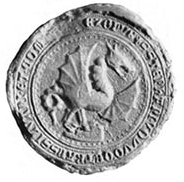
Stephen (I) Lackfi was an influential Hungarian nobleman and a successful military leader in the Kingdom of Hungary. He played a significant role in the Neapolitan campaigns of Louis the Great.
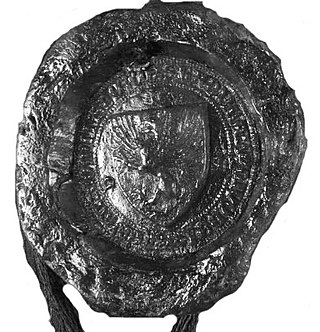
Ladislaus (I) Losonci was a powerful Hungarian baron, who served as Count of the Székelys from 1373 to 1376, and Voivode of Transylvania from 1376 to 1385 and from 1386 until his death. He was a staunch supporter of Mary, Queen of Hungary after 1382. In contemporary records, he was often called Ladislaus the Elder to distinguish him from his namesake relative Ladislaus II Losonci.

Emeric (I) Bebek was a powerful Hungarian baron, who rose to prominence during the last regnal years of King Louis I of Hungary. After 1382, he was a staunch supporter of Mary, Queen of Hungary. Recognizing Sigismund's accession to the throne, he was made Judge royal, then Voivode of Transylvania. He received numerous land donations, which founded the wealth and influence of his family in the 15th century.

Frank Szécsényi, also Francis, was a Hungarian baron and military leader, who was a staunch supporter of King Sigismund of Luxembourg. He participated in various military campaigns against the Ottoman Empire. In 1401, he joined the magnate conspiracy against Sigismund, but returned to the king's allegiance shortly thereafter, retaining his political influence until his death.
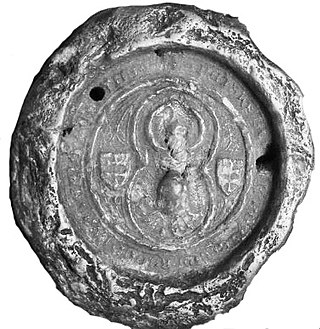
Simon Szécsényi, was a Hungarian baron and military leader, who was a staunch supporter of King Sigismund of Luxembourg since the 1380s. Joining a magnate conspiracy in 1401, he played a key role in the arrest of the king, but later was pardoned and retained his political influence until his death.
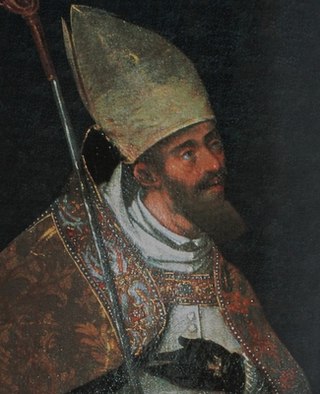
Michael from the kindred Bő, was a Hungarian prelate at the turn of the 13th and 14th centuries, who served as Bishop of Zagreb from 1296 to 1303, then Archbishop of Esztergom from 1303 until his death.
Stephen (II) from the kindred Báncsa was a Hungarian prelate in the 13th century, who served as Archbishop of Kalocsa from 1266 until his death. He was a staunch supporter of Stephen V of Hungary.

Nicholas Dörögdi was a Hungarian prelate in the first half of the 14th century. He was elected Archbishop of Esztergom between 1329 and 1330, then Bishop of Eger from 1330 until his death.
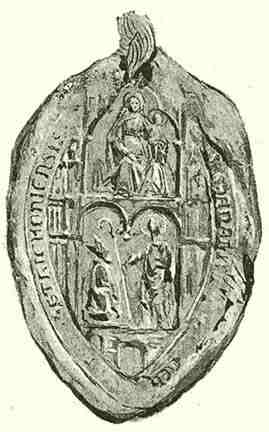
Csanád Telegdi was a Hungarian prelate in the first half of the 14th century. He served as Bishop of Eger from 1322 to 1330, then Archbishop of Esztergom from 1330 until his death. Descending from an old Hungarian kindred, he was a confidant of the ruling Capetian House of Anjou. He crowned Louis I of Hungary in July 1342. The complete renovation of the Esztergom Cathedral took place during his archiepiscopate.
Thomas (I) Vásári was a Hungarian nobleman in the 14th century, who served as ispán of Somogy County in 1371.
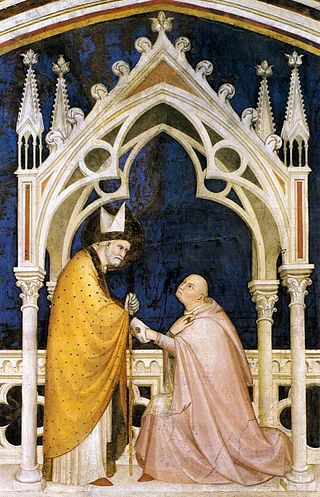
Gentile Portino da Montefiore was an Italian Franciscan friar and prelate, who was created Cardinal-Priest of Santi Silvestro e Martino ai Monti by Pope Boniface VIII in 1300. He served as Major Penitentiary of the Roman Curia from 1302 to 1305. Pope Clement V sent him to Hungary as a papal legate in 1308, with the primary task of assuring the Angevins the Hungarian throne. Gentile built the San Martino Chapel in the Lower Basilica of Saint Francis of Assisi, dedicated to Saint Martin of Tours. He was buried in the neighboring Chapel of St. Louis.















